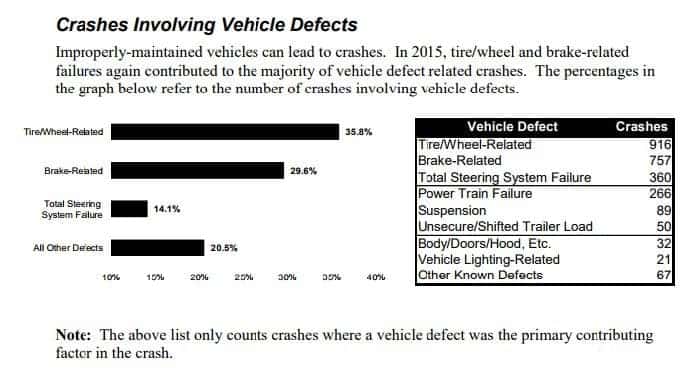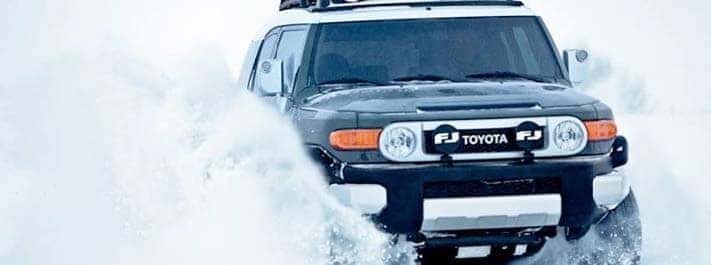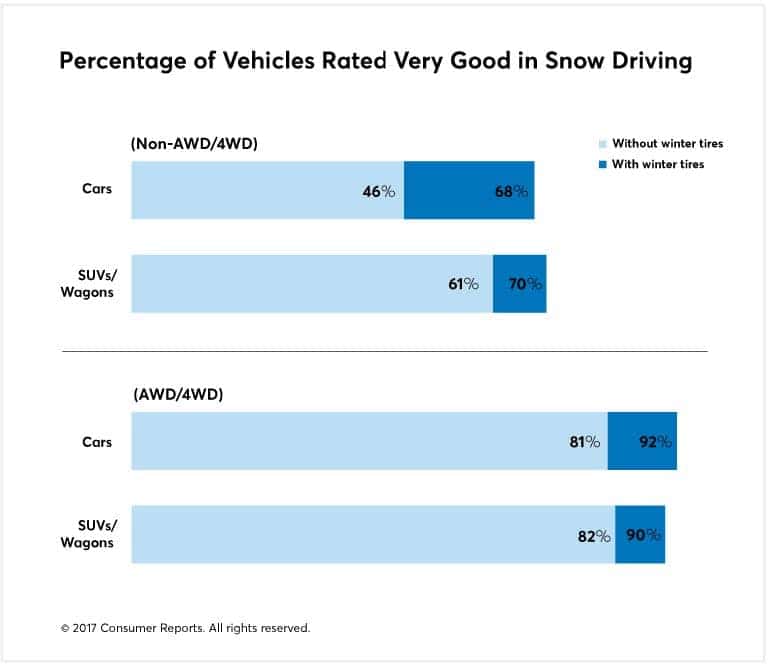Winter is coming… The White Walkers are marchin g south to Westeros… Are you ready? Okay, I’m sorry but I can’t help sharing my love for Game of Thrones! Fortunately we don’t have to prepare for the Knight King and his army of the undead, but we do have to prepare for winter driving and all that comes with it! From icy and slippery conditions to poor visibility winter driving
g south to Westeros… Are you ready? Okay, I’m sorry but I can’t help sharing my love for Game of Thrones! Fortunately we don’t have to prepare for the Knight King and his army of the undead, but we do have to prepare for winter driving and all that comes with it! From icy and slippery conditions to poor visibility winter driving
presents countless challenges and drastically increases the risk of crashes. Forty-one percent of all weather-related car crashes on U.S. roads are due to conditions involving snow, sleet, ice, and slush. That’s pretty sobering when you consider that those conditions usually exist during just a few months of the year. Accidents caused by winter weather result in 150,000 injuries and 2,000 deaths each year, on average, according to a study by the Federal Highway Administration. Safe driving should not be an afterthought – it should be in the forefront of our mind especially in winter driving conditions. I know I don’t need to tell you not to text and drive and to buckle your seat belt. And of course if you have the option not to drive in winter conditions, don’t! Stay home and make a snowman! So with that said here are the 7 Tips for Safer Winter Driving:
1. Windshield Washer Fluid
It’s kind of hard to drive if you can’t see anything! Icy, snowy roads are covered with salt and sand to help provide traction to cars, but when that salt, sand, and snow get on your windshield it becomes very difficult to see and impossible to get off your windshield without the help of Windshield Washer Fluid. Don’t just add water! Make sure to use winter-grade Windshield Washer Fluid that is formulated for coldest and most extreme conditions. As a courtesy to Preston Auto clients we will fill your Windshield Washer Fluid free of charge. Stop into any Preston Auto location anytime, no appointment is necessary for this service.
2. Maintain Your Car
As much of an impact as winter weather has on the likeliness of an accident, cars that are improperly maintained caused even more accidents than weather conditions (see infographic). So putting an improperly maintained vehicle on snowy, icy roads is a recipe for disaster.
2015 Pennsylvania Crash Facts & Statistics from PennDOT

Some of the most important maintenance items to check on your car are your tires, brakes, wiper blades, and batteries. When it comes to tires, it’s important to make sure that your tires have adequate tread on them for winter driving. Make sure that they aren’t balled and that they are balanced. One of the things I am asked frequently about when it comes to tires is if someone should get winter tires or not. Most newer vehicles come with an all-season tire. According to Gene Petersen, Consumer Report tire program manager, “Even though all-season tires offer good traction in most weather conditions, they are a compromise. They neither perform as well in the dry and wet as summer tires nor give as much traction in snow as winter/snow tires.” Consumer Reports’ tests
show that when roads get nasty, winter/snow tires easily outperform most all-season tires. Engineered specifically for winter driving, winter/snow tires tend to have a deeper tread to grip snow, plus rubber compounds designed to remain pliable in the cold.
Consumer Reports recommends that if you regularly drive on snow-covered roads or if you have to be at work regardless of the weather conditions to get four winter/snow tires for balanced traction and handling, but if you rarely get snow—or if it’s gone quickly—stick with all-seasons, preferably a set that is rated highly for snow traction and ice braking.
Batteries have a useful life of 4 to 5 years on the average in our area. If your battery is still the original and nearing the end of its useful life please consider a maintenance replacement. Batteries never fail at a convenient time and when they do require a tow truck and the expense of a technician to diagnose the concern.
To make sure that your vehicle is winter ready for the month of December we are offering a complimentary Winter Check up to test your battery, check your wipers, tires, brakes, and more. No appointment is necessary, but if you’d prefer to make one you can call 1-800-PRESTON to schedule an appointment.
3. Don’t Leave Home Without These – Winter Car Safety Kit
You never plan on getting in an accident, but a Winter Car Safety Kit will have you covered in the case of an
emergency.
Here’s what to include:
● Cell Phone. So you can call for help! Don’t forget to include a charger in your Winter Car Safety Kit in case your battery is low and if you are in an area with bad service your phone will use more power searching for a signal.
● Roadside Assistance Number. AAA is a great service, but be aware that many new vehicles come with complimentary roadside assistance for a certain period of time. Many of these roadside programs offer just as good if not even better service and benefits than AAA. Often times there is a sticker on one of your windows with your manufacturer’s roadside assistance number, but I’d recommend saving this number on your phone. If you call this number you can provide your VIN number to see if you have roadside coverage still available. If your roadside coverage has expired many brands offer packages to extend their roadside program.We also have complimentary roadside stickers that you can put on your owner’s manual or dashboard. Stop into any of our dealerships to get a complimentary roadside sticker.
● Spare Tire/Tire Sealant. Know where your spare tire is located! While most Trucks and SUV’s come equipped with a spare tire, there are many new cars that don’t. These cars come with fix a-flat like tire sealant to seal a damaged tire in the case of an emergency. We have many customers who purchase a spare tire if their vehicle didn’t come equipped with one. Either way it’s important to know how to change or fix a flat before it happens.
● First-Aid Kit. Most new cars come equipped with one typically near the aforementioned spare tire. If your car doesn’t have one you can pick one up very inexpensively on Amazon, Walmart, Lowe’s, etc. or make your own with medical tape, bandages, gauze pads, and antiseptic wipes.
● Food and Water. Make sure to get foods that won’t spoil obviously like protein bars or granola bars.
● Portable Jump Starter or Jumper Cables. While more expensive, I am personally a big fan of the Portable Jump Starters because you don’t need another car jump yours. You can find a good Portable Jump Starter for around $100 that will last years, well worth the investment.
● Flashlight. Many of us use the light on our phone, but it’s still a good idea to have a regular old fashion flashlight in case the battery is running low on your phone.
● Flares and Hazard Triangles. Make sure to check the expiration date on the flares and make sure to keep out of the reach of children.
4. Clear the Snow Off Your Car. Completely. This is law in most states and for good reason. When else is it legal drive a car that you can barely see out of? Also it’s dangerous to drive a car that isn’t cleaned off. The car pictured with the iceberg on top of it is funny, but I see cars driving down the road like this all the time. Well maybe not with an iceberg, but rather an ice sheet on top of their car. If you come to a stop that ice sheet can slide down and cover your entire windshield or fly off the back and hit another car or cause that car to swerve out of the way of the ice sheet. It’s also very important to make sure that you clear snow and ice off of your headlights and taillights as well so that you are able to let other drivers know if you are turning or braking.
This is law in most states and for good reason. When else is it legal drive a car that you can barely see out of? Also it’s dangerous to drive a car that isn’t cleaned off. The car pictured with the iceberg on top of it is funny, but I see cars driving down the road like this all the time. Well maybe not with an iceberg, but rather an ice sheet on top of their car. If you come to a stop that ice sheet can slide down and cover your entire windshield or fly off the back and hit another car or cause that car to swerve out of the way of the ice sheet. It’s also very important to make sure that you clear snow and ice off of your headlights and taillights as well so that you are able to let other drivers know if you are turning or braking.
5. Driving Tips
Ok so you have your Windshield Washer Fluid filled, your call is all maintained and ready to go, you have your Winter Car Safety Kit ready to go it’s time to brave the snowy, icy roads! Do everything slowly and gently. In the snow, the tires are always just barely grabbing the road. Accelerate slowly and gently, turn slowly and gently, and brake slowly and gently. To do this, you have to anticipate turns and stops. Going slowly and leaving and leaving plenty of distance between you and other cars. According to AAA the normal dry pavement following distances should be three to four seconds, in snowy and icy conditions that following distance should be increased to eight to ten seconds. Rapid movements lead to skids and loss of control. And even if you maintain control of your car, not everyone else will. So don’t ever get lulled into a false sense of security. So smooth out your driving style. “The key is to drive as smoothly as possible, avoiding sudden actions or rapid movements of any kind,” says Gene Petersen, program manager for tires at Consumer Reports. “Drive as if you have a full cup of coffee on the dashboard and don’t want to spill any.” Steer into a slide. When your car’s rear begins to slide during a turn, gently let up on the accelerator and turn the steering wheel in the direction that the car is sliding. This will help straighten it out. If your car is sliding straight ahead when you’re trying to make a turn, your initial reaction might be to keep turning the wheel. That could hurt more than help. Instead, lift gently off either the accelerator or the brake and straighten the wheel—which gives your tires a chance to regain grip. Don’t power up hills, but don’t stop going up a hill. Get some inertia going on a flat roadway before going up the hill. Applying extra gas while going up a snowy hill will just keep your wheels spinning. Most vehicles now come with anti-lock brakes, so no need for pumping the brakes  with anti-lock brakes. Use the ball of your foot to apply firm, steady pressure. Also don’t pass the snow plows. “Let the trucks do their job,” says John Ibbotson, chief mechanic at Consumer Reports. “The road is likely more treacherous in front of those trucks, and you run the risk of sliding as you accelerate to pass them. Don’t follow too closely—you might wind up with a cracked windshield from flying pebbles.”
with anti-lock brakes. Use the ball of your foot to apply firm, steady pressure. Also don’t pass the snow plows. “Let the trucks do their job,” says John Ibbotson, chief mechanic at Consumer Reports. “The road is likely more treacherous in front of those trucks, and you run the risk of sliding as you accelerate to pass them. Don’t follow too closely—you might wind up with a cracked windshield from flying pebbles.”
6. Practice Cold Weather Driving
Practice makes perfect right? Go to an empty parking lot and try sending the car into a little skid on purpose. Slam on the brakes, then practice turning into the skid and see what happens – and practice until you’re comfortable regaining control of the car. This will help you to be prepared in the event that you do slip or skid and you will know how your car reacts as well.
7. All Wheel Drive
If you Google “Is AWD worth it?” You will find conflicting reports about the benefits and drawbacks to AWD. When braking, AWD provides little to no benefit over a front wheel drive vehicle, however when you are accelerating all studies show that there is significantly more traction on slippery road conditions with AWD (check out the Consumer Report infographic below) Plus when it comes to safety, I don’t know about you but I prefer to err on the side of caution. I understand that an AWD vehicle costs $1,500-$2,000 more than its FWD counterpart, but something to keep in mind is that FWD vehicles (especially in SUV’s) in the northeast and the midwest depreciate much quicker than AWD vehicles. So often times the money you are saving upfront buying a FWD SUV is lost in depreciation when you go to trade-in or sell it. So the next time you’re in the market for a vehicle, I’d highly recommend looking at getting an AWD vehicle for maximum winter driving safety.

Sources cited:
https://www.consumerreports.org/cro/magazine/2015/09/do-you-really-need-awd-in-the-snow/index.htm
https://www.consumerreports.org/winter-driving/winter-driving-survival-guide/
https://www.consumerreports.org/winter-driving/expert-tips-for-safe-winter-car-trips/

